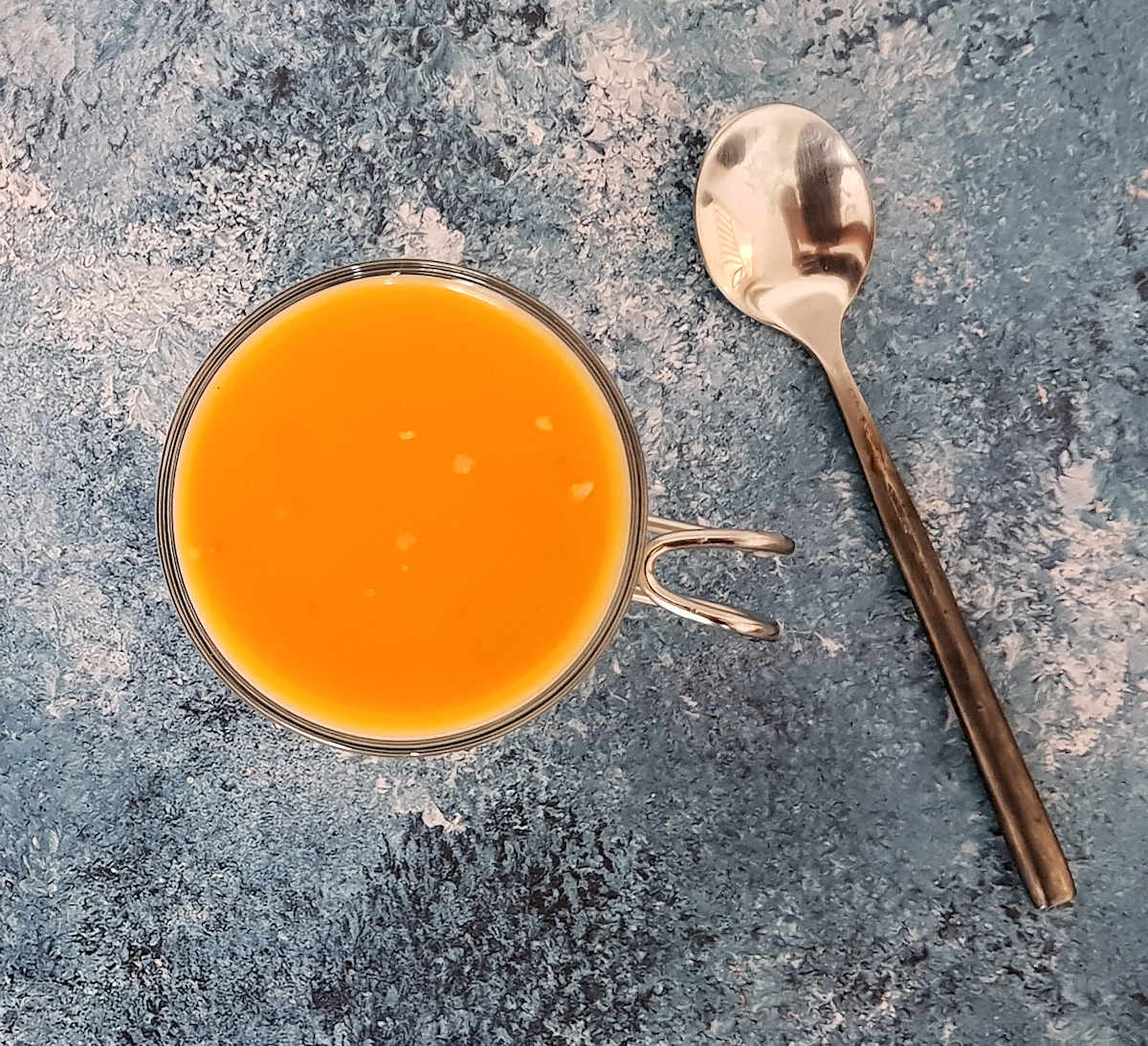Panna cotta means cooked cream in Italian which doesn’t sound like much, but the taste is heavenly – as long as you don’t overdo on gelatine and turn panna cotta into blancmange.

What is panna cotta?
The second most popular Italian dessert (though competing with cannoli), panna cotta is ridiculously simple. It is what it says on the tin, in Italian: cooked cream.
Classically it should be flavoured with just good quality/real vanilla though multiple mutations abound: raspberry, chocolate, pineapple, ginger flavours. There’s also plenty of messing with the main ingredient: yoghurt or crème fraiche panna cottas.
I’m no purist or a cultural appropriation warrior but those fruity or chocolatey varieties make panna cotta taste more like a blancmange or one of those German milk puddings that come out of a packet. If anything, panna cotta is closer to a British posset, which is also cooked cream, thickened with the acidity of lemon instead of gelatine.
Pure form panna cotta
So my preference is for the pure form: double cream with a little milk to lighten it up, and vanilla only.
I borrowed from Nigel Slater the idea of drizzling the panna with passion fruit puree but in fact my tasters proclaimed in unison it was best on its own. There you go: it’s pure form on the double.
Texture is the key
The pivotal element for me is the texture. Everyone knows that panna cotta is a shapely mound of cream sitting pretty on a plate, trembling daintily when you plunge your spoon in but tasting heavenly of cream, not jelly.
That for me is crucial: retaining creamy texture by all means, even at the cost of the dessert NOT sitting so pretty. Because if you want it to sit, you’ll need to whack up the gelatine content and sacrifice the soft creaminess.
I don’t want to do that and my panna cotta tastes like white magic but it doesn’t sit very well, as you can see in the pictures.
Without making excuses, I really don’t think it must be turned out of the cups it sets in. Perhaps in restaurants it does but if you’re making dessert for your family or a bunch of friends you don’t necessary need lots of ‘wows’ on sight: you need them on the first spoonful. And this panna cotta sure does deliver on that count.
How to make panna cotta
It’s made in two stages: cooking and chilling.
The mix of double cream and milk simmers for about ten minutes flavoured with excellent vanilla extract, or vanilla seeds scraped out of two pods. In the latter case add the spent pods in too and retrieve them when the mix is off the heat.
In the meantime gelatine (just one sheet, mindfully of the above) will soak and soften in cold water, before being added, squeezed out, into the cooked cream. Straining the resulting mix is not strictly essential but gelatine does like to form lumps, so it’s your choice.
This mix is now folded into lightly sweetened and lightly whipped cream, for fluffier texture.
The panna cotta can finally be decanted into pretty bowls or espresso cups and placed in the fridge to set, for a few hours or overnight.
What to serve panna cotta with?
As stated above and attested by my tasters, it truly doesn’t need any embellishments.
But if you’d like to make passion fruit puree to spoon over, it’s easy enough.
Fresh berries also go nicely with the dessert, or some shaved dark chocolate.
More Italian dessert recipes
Sfogliatelle are Italian flaky pastries from Naples with creamy ricotta filling, pronounced 'sfohl-ya-TEL-leh'. Sometimes called 'lobster tails', because of their shape.
Italian ricotta cookies, soft and tender lemon biscuits made with ricotta cheese and butter. These Italian lemon ricotta biscuits, or biscotti alla ricotta are just like Nonna’s!
Hazelnut ricotta cake with apricot and chocolate glaze is smooth with a poppy crunch, like velvet dipped in glitter. It is rich but tastes light, so you‘re tempted to have another slice.
More creamy pudding recipes
Lemon posset is a fabulous dessert prepared in about 15 minutes, which originates from a spiced milky medieval drink. Lemon posset should be served in shot glasses with seasonal berries or pomegranate seeds and a little whipped cream.
Mascarpone sorbet with lemon flavour inspired by a River Café recipe is smooth, creamy and unbelievably refreshing. This is a no-churn recipe.
Strawberry fool is the supreme of strawberries and cream, with layers of vanilla scented whipped cream and gorgeous fresh strawberry puree, barely sweetened.